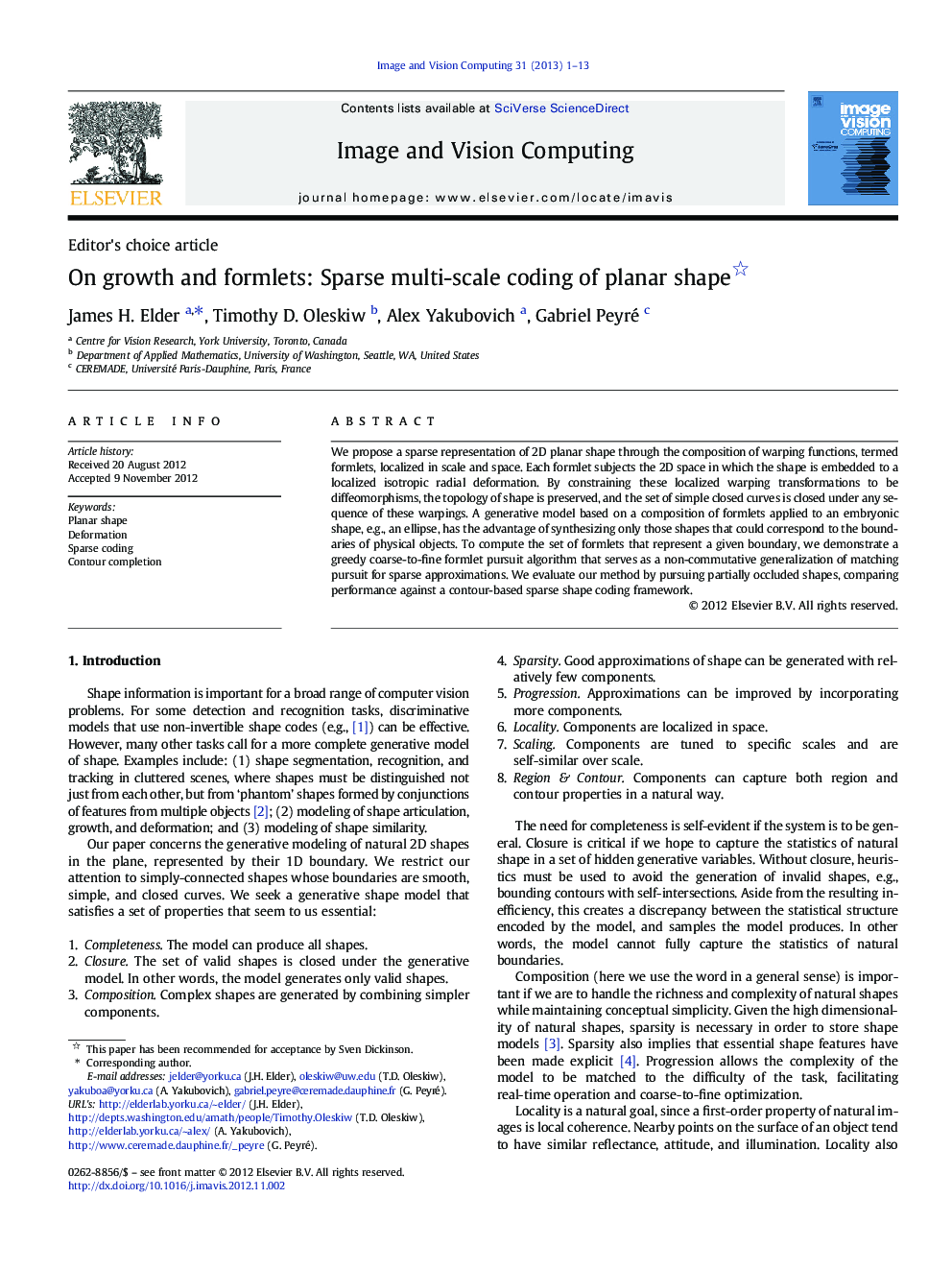| Article ID | Journal | Published Year | Pages | File Type |
|---|---|---|---|---|
| 528774 | Image and Vision Computing | 2013 | 13 Pages |
We propose a sparse representation of 2D planar shape through the composition of warping functions, termed formlets, localized in scale and space. Each formlet subjects the 2D space in which the shape is embedded to a localized isotropic radial deformation. By constraining these localized warping transformations to be diffeomorphisms, the topology of shape is preserved, and the set of simple closed curves is closed under any sequence of these warpings. A generative model based on a composition of formlets applied to an embryonic shape, e.g., an ellipse, has the advantage of synthesizing only those shapes that could correspond to the boundaries of physical objects. To compute the set of formlets that represent a given boundary, we demonstrate a greedy coarse-to-fine formlet pursuit algorithm that serves as a non-commutative generalization of matching pursuit for sparse approximations. We evaluate our method by pursuing partially occluded shapes, comparing performance against a contour-based sparse shape coding framework.
Graphical abstractFigure optionsDownload full-size imageDownload high-quality image (293 K)Download as PowerPoint slideHighlights► We propose a novel sparse representation of 2D planar shape. ► The representation is based on the composition of localized warping functions, termed formlets. ► By constraining these transformations to be diffeomorphisms, the topology of shape is preserved. ► We evaluate our method by pursuing partially occluded shapes. ► The formlet representation performs favorably relative to an alternative contour-based framework.
